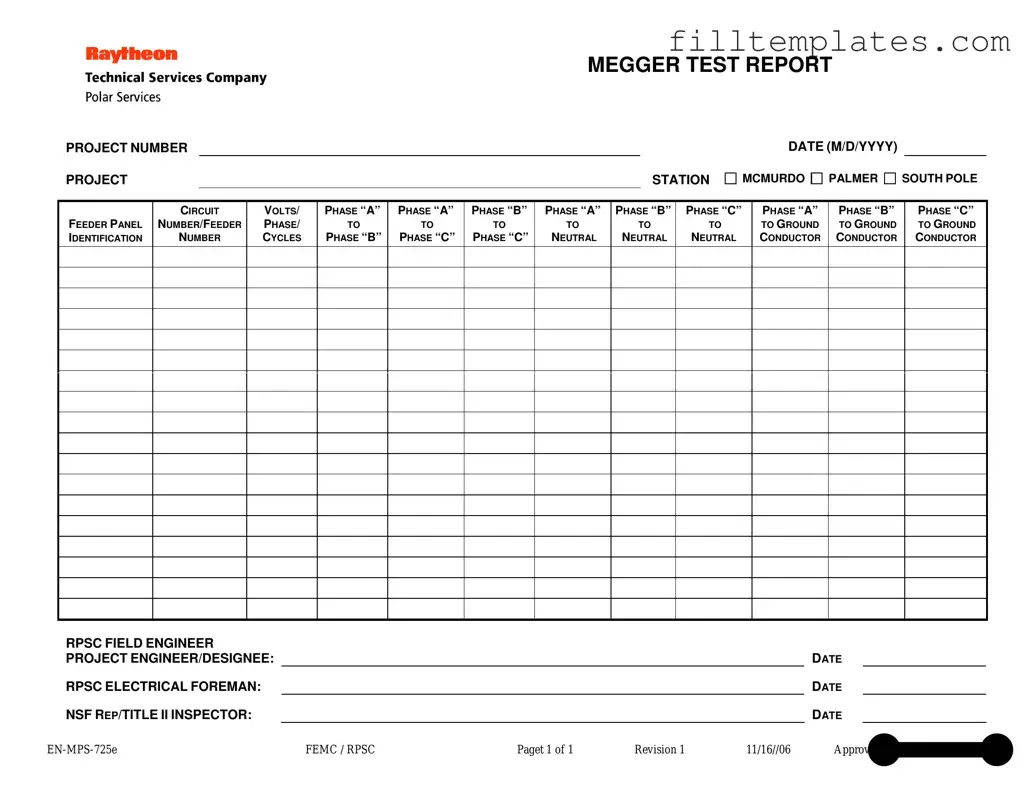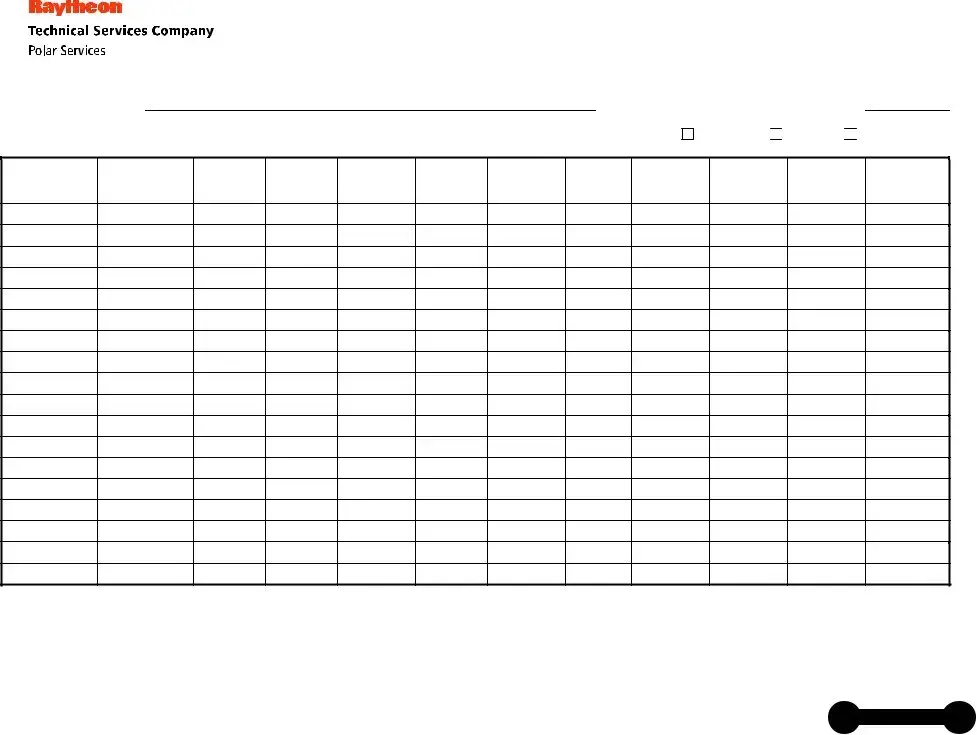The Megger Test form is a crucial document used in electrical testing to ensure safety and functionality in various projects, particularly in challenging environments like McMurdo, Palmer, and the South Pole. This form captures essential information, including project numbers, station details, and testing dates, providing a comprehensive overview of the electrical systems being evaluated. It features sections for feeder panel identification and circuit numbers, allowing for precise tracking of the electrical components under scrutiny. Voltage readings across different phases, as well as measurements to neutral and ground conductors, are meticulously recorded. This data is vital for assessing insulation resistance and identifying potential issues in the electrical infrastructure. The form also includes spaces for signatures from key personnel, such as the RPSC field engineer and project engineer, ensuring accountability and thorough documentation. By utilizing this standardized reporting tool, engineers can maintain rigorous safety standards while conducting necessary inspections and tests.



 PALMER
PALMER 
 SOUTH POLE
SOUTH POLE